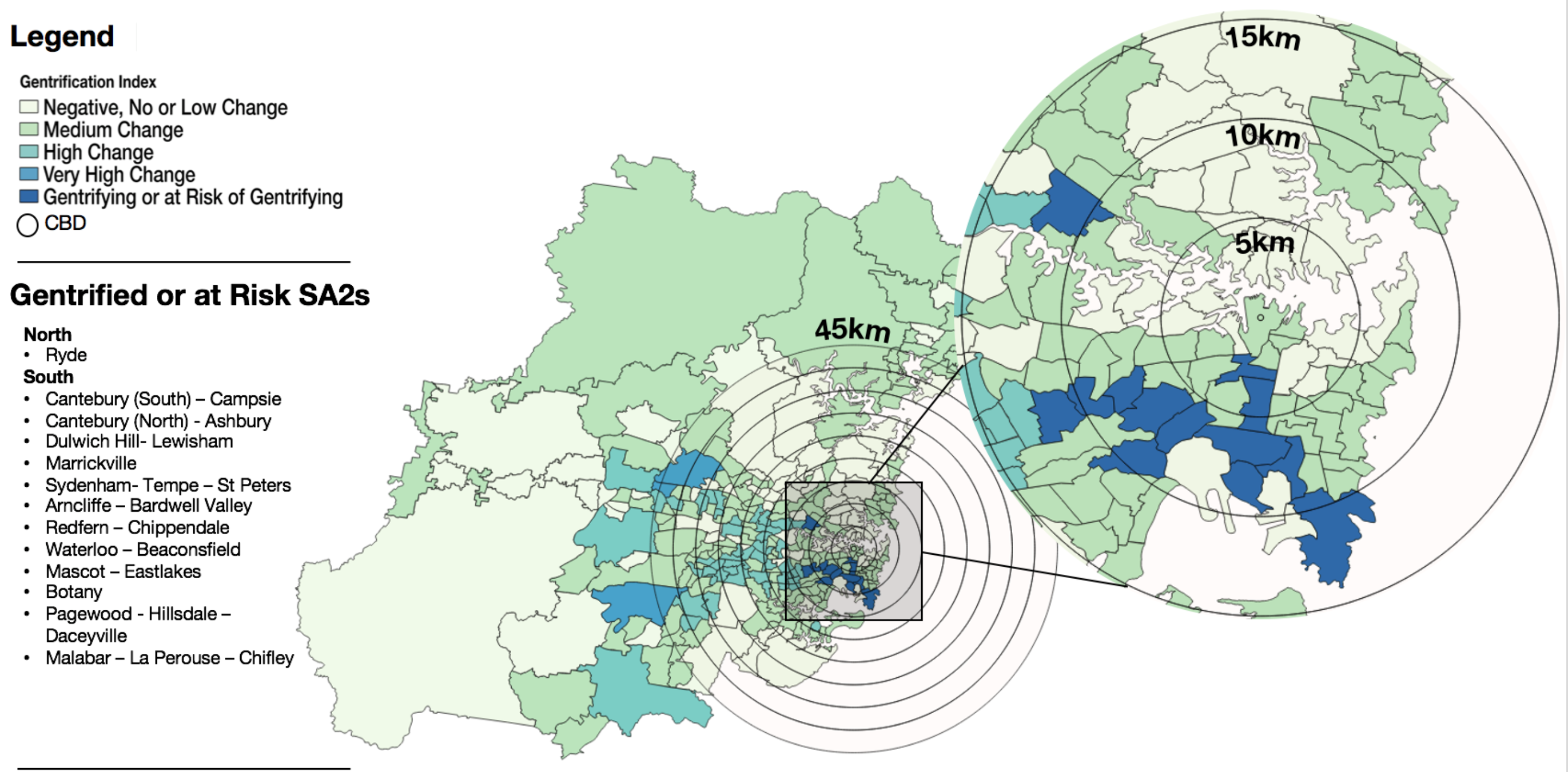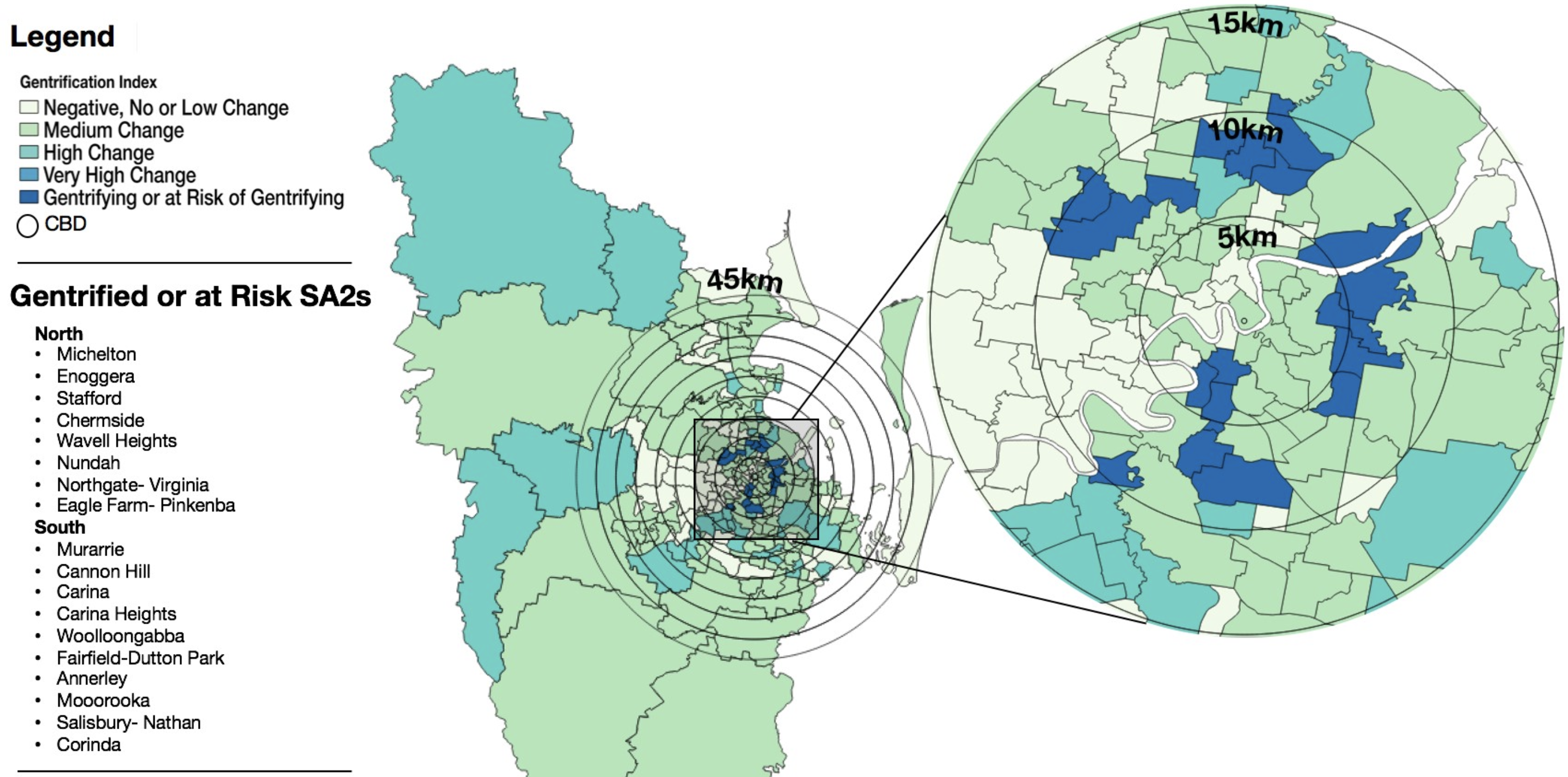A ring of suburbs within a 15-kilometre radius of Brisbane, Melbourne and Sydney CBDs are experiencing the highest levels of gentrification, research has found.
The University of Queensland research shows suburbs in these three cities seem to be either gentrified or rapidly gentrifying, while the inner-city suburbs of Sydney, Melbourne and Brisbane—now typically affluent areas—are not seeing a change.
Largely, gentrification is the changing character of a neighbourhood through the influx of wealthier residents and businesses into once lower-income areas.
It is one of the significant changes to occur in Australian cities—and across the world— where property values are pushed up in inner and middle-ring suburbs.
UQ senior lecturer in urban planning Dr Dorina Pojani says the findings are surprising, contradicting earlier urban geography theories placing gentrification as an “inner-city phenomenon”.
“Instead, the highest levels of urban renewal are occurring within a band located five-to-15 kilometres from the cities’ central business districts,” Pojani said.
Gentrification in Sydney suburbs

While gentrification increases property values in areas that have seen prolonged disinvestment, the supply of affordable housing available to existing lower-income residents is reduced.
Lower-income residents are then also denied the benefits of economic growth and the increased availability of services that come with greater investment in these changing areas.
“In contrast to outer suburbs, the inner suburbs in all three cities are relatively stable and affluent at this point, with median house prices surpassing one million dollars, and median incomes substantially higher than average,” Pojani said.
The research shows Sydney areas seeing gentrification include Ryde, 13 kilometres north-west of the CBD. And Sydney suburbs south of the CBD include Campsie, Dulwich Hill, Marrickville, Sydenham, and Mascot.
While Melbourne suburbs include Collingwood, Coburg, Coburg North, Pascoe Vale, in the north-east, along with Footscray, Seddon, West Footscray, Sunshine, Sunshine West and Sunshine North.
Gentrification in Melbourne suburbs

The study found that the “new middle class”, which has traditionally been associated with inner-city gentrification, is unable to access the housing market in these already “gentrified suburbs”, and as a result are moving outwards.
“Relocating outside the CBD bubble,” Pojani said.
Brisbane is home to a ring of gentrification suburbs within the five-to-15-kilometre radius, including Mitchelton, Enoggera, Stafford, Chermside, Wavell Heights on Brisbane's northside.
Brisbane suburbs to the south of the CBD include Murrarie, Cannon Hill, Carina, Woolloongabba, Corinda, Fairfield-Dutton Park, Salisbury, Annerley and Moorooka.
Gentrification in Brisbane suburbs

Pojani says the findings challenge anti-gentrification sentiments which in all three cities originate from inner-city suburbs.
“It’s clear that community backlash has not stemmed from poor and vulnerable groups fearing displacement,” she said.
“Rather, it may be considered as a manifestation of the NIMBY— Not In My Back Yard—syndrome, promulgated by local homeowners [who were] once themselves gentrifiers.
“It may be the case that inner-city communities react to more visible developments in the urban core, which take the form of high-rise, luxury housing and commerce,” Pojani said.
“Resistance to inner-city redevelopment may also be a reaction to Australia’s liberal approaches to city planning, which have enabled private developers to build with minimal community participation.”
The research included demographic metrics such as increasing household incomes, education, home-ownership and white-collar occupations as well as decreasing age and growing population density from 2006 to 2016.
The information was then combined with data from the Australian census, Google Maps and local council data repositories.














